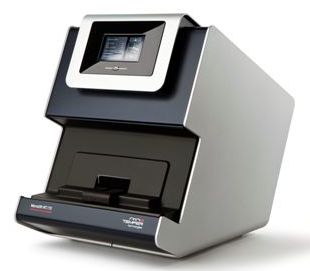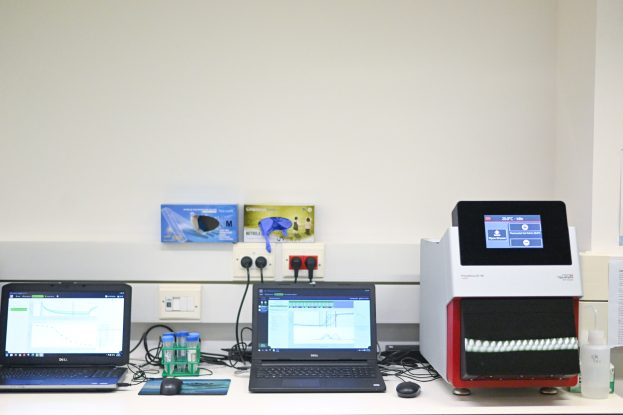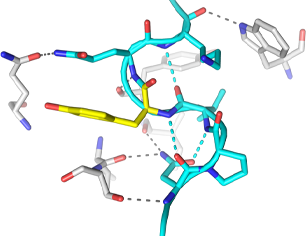
Biophysical Characterization
Protein characterization provides detailed insights into a protein’s structure, function, and behavior.
By analyzing different properties, researchers can better understand how proteins interact with other molecules and perform their biological roles. Accurate characterization is crucial for drug development, and understanding diseases at the molecular level, allowing scientists to design targeted therapies and novel biotechnological applications
Biomolecular Interaction

Binding affinity experiments are conducted to measure the strength of the interaction between two molecules, such as a protein and its ligand. The TCSB is equipped with state-of-the-art instruments designed for analyzing molecular interactions and determining binding affinity (Kd).

NanoITC, TA Instruments
NanoITC (Isothermal Titration Calorimeter), is mostly used for studying the binding of small molecules to macromolecules (the binding of a drug to its target protein).
This instrument is highly sensitive and uses solid state thermoelectric heating and cooling systems to precisely control temperature, and has an injection syringe assembly for efficient and accurate delivery of titrant.
The NANO ITC is based on a physical technique that can determine the binding affinity (Ka), enthalpy changes (ΔH), and binding stoichiometry (n) of the interaction between two or more molecules. These measurements allow to deduce the Gibbs energy changes (ΔG) and entropy changes (ΔS), using this equation: ΔG = -RTlnKa = ΔH-TΔS.

MST, NanoTemper
MST (Microscale Thermophoresis) measures the binding interactions between molecules by detecting changes in their mobility under a temperature gradient.
When a ligand binds to a target molecule, alterations in size, shape, charge, or hydration shell affect its movement. By fluorescently labeling the molecules, MST can track these mobility changes in very small quantities. This technique provides the binding constant (Kd) without requiring large amounts of pure sample, as only the labeled molecules are monitored, making it highly efficient for studying molecular interactions.
Octet BLI, Sartorius
Based on Bio-Layer Interferometry (BLI), Octet® BLI systems enable real-time, label-free analysis for the determination of kinetics, affinity and antibody/protein quantitation. This fluidics-free instrument platform offers several advantages over other label-free techniques such as Surface Plasmon Resonance (SPR).
The Octet® BLI platform also provides robust monitoring of biomolecular interactions to overcome limitations in throughput, performance and cost associated with traditional technologies such as enzyme-linked immunosorbent assay (ELISA) or high-performance liquid chromatography (HPLC). These fluidics-free, low-maintenance, sensitive systems increase lab productivity, reduce costs and shorten experimental timelines.
BLI provides valuable insights into binding kinetics, including association and dissociation rates, as well as binding affinity. Its high sensitivity and ability to work with crude samples make it an efficient tool for studying a wide range of interactions, such as protein-protein, protein-DNA, or antibody-antigen binding.
Protein Stability


NanoDSF, NanoTemper
NanoDSF (Differential Scanning Fluorimetry) is a label-free technique used to measure protein stability by detecting changes in the fluorescence of intrinsic tryptophan and tyrosine amino acids as the protein unfolds.
It allows stability screening of antibodies, enzymes, and membrane proteins, as well as, analyzing protein-ligand interactions, formulations, and overall protein quality. Additionally, aggregation can be detected using back reflection technology. This technique requires small sample volumes and obtain reliable data on protein behavior under varying conditions.
Surface Microscopy Imaging

AFM, Brucker
JPK NanoWizard Atomic Force Microscopy (AFM) is a high-resolution imaging technique that allows researchers to visualize and manipulate surfaces at the nanoscale.
Utilizing a sharp tip attached to a cantilever, it scans over a sample to measure forces between the tip and the surface, providing detailed topographical maps. The NanoWizard system is known for its versatility, capable of operating in various modes, including contact and tapping mode, and is suitable for a wide range of applications in materials science, biology, and nanotechnology. Its advanced features enable real-time imaging and characterization of complex samples, making it a valuable tool for cutting-edge research.


